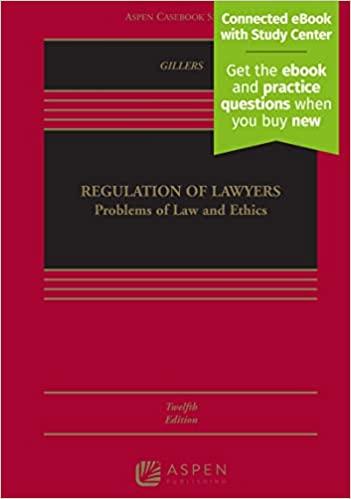Question
Film stars who perform on Broadway usually sign the standard Actors' Equity run of show contract. Question 1 options: True False Question 2 (1 point)
Film stars who perform on Broadway usually sign the standard Actors' Equity "run of show" contract.
Question 1 options:
| True | |
| False |
Question 2 (1 point)
The types of stage play ownership are:
Question 2 options:
| sole ownership, joint work ownership, and made for hire ownership | |
| sole ownership, derivative ownership, and multi-author ownership | |
| underlying work ownership, legitimate stage ownership, and audiovidual rights ownership | |
| none of the above |
Question 3 (1 point)
Which of the following is most correct, concerning playwrights and screenwriters?
Question 3 options:
| Both plays and screenplays are usually assigned to producers as works made for hire | |
| Screenwriters and playwrights both maintain economic control over their works, and do not assign all rights to producers | |
| Playwrights retain artistic control over the play, but screenwriters do not | |
| Screenplays are usually licensed to multiple productions in multiple media, but plays are licensed only for single stage productions |
Question 4 (1 point)
Which of the following is not correct about Dramatist Guild Approved Production Contract advance option fees?
Question 4 options:
| if the play is produced, the option fee is recouped before any additional royalties are payable | |
| even if the play is not produced, the option fee is nonrefundable | |
| the amount of the option fee is entirely negotiable between the producer and the playwright | |
| a producer can pay multiple option fees to obtain multiple production rights |
Question 5 (1 point)
Which of these terms would not be standard when negotiating a legitimate stage director contract?
Question 5 options:
| the right to direct subsequent productions produced by the same producer | |
| a negotiated flat fee compensation | |
| a standard 6% share of the gross weekly box office receipts | |
| the right to direct a play that transfers from a second-class theater to a first-class theater |
Question 6 (1 point)
The classification of "Broadway" theaters is:
Question 6 options:
| all theaters in New York City of greater than 599 seats | |
| theaters physically situated on Broadway in New York City, regardless of house size | |
| all theaters in New York City located between Greenwich Village on the south and Harlem on the north, but not including Lincoln Center, Alice Tully Hall, or the Metropolitan Opera House | |
| the 40 theaters in New York City located between north of West 41st, south of West 53rd, west of Avenue of the Americas (6th Ave) and east of Ninth Avenue, plus Lincoln Center |
Question 7 (1 point)
The key point in analyzing whether a play is a joint work within the meaning of the Copyright Law is the intention of the writers at the time the writing is done that the parts be absorbed or combined into an integrated unit.
Question 7 options:
| True | |
| False |
Question 8 (1 point)
Workshop and developmental production rights are only granted pre-Broadway.
Question 8 options:
| True | |
| False |
Question 9 (1 point)
A royalty pool for a Broadway play divides the weekly profits among the author, director, designers, producer, investors, and possibly theater owner, after weekly running expenses are paid.
Question 9 options:
| True | |
| False |
Question 10 (1 point)
"Primary" theater producers produce stage productions in which types of theaters?
Question 10 options:
| first-class or second-class productions, and non-profit regional theaters | |
| stock, bus-and-truck, and amateur theaters | |
| only theaters who are members of the League of Resident Theaters | |
| high school, college, university, and other educational institution theaters |
Step by Step Solution
There are 3 Steps involved in it
Step: 1

Get Instant Access to Expert-Tailored Solutions
See step-by-step solutions with expert insights and AI powered tools for academic success
Step: 2

Step: 3

Ace Your Homework with AI
Get the answers you need in no time with our AI-driven, step-by-step assistance
Get Started


